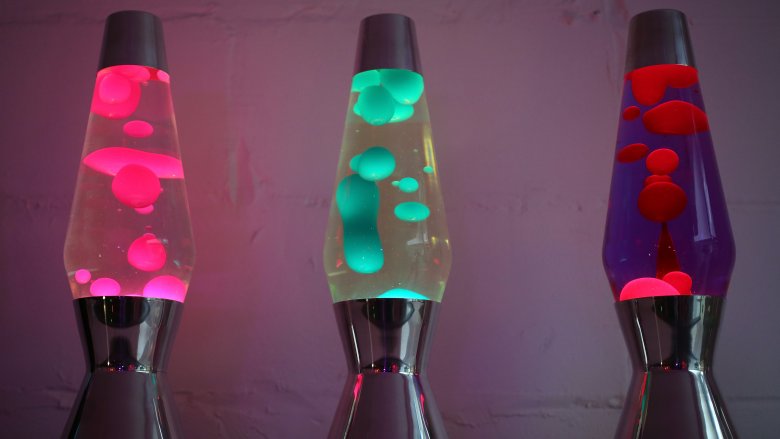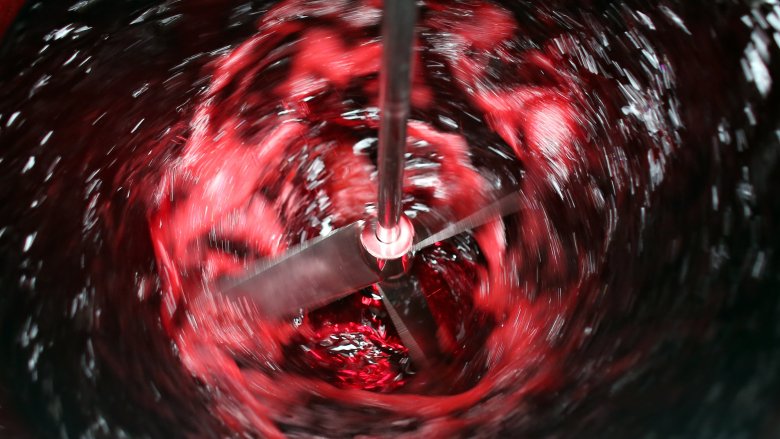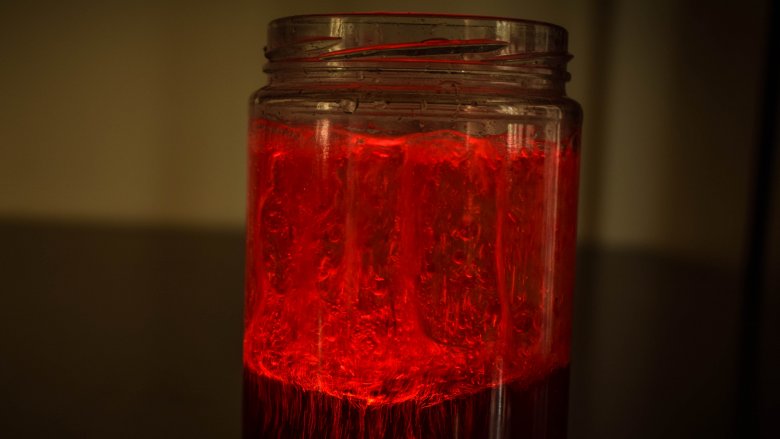What's Really Inside A Lava Lamp?
The trippy niftiness of a lava lamp is almost beyond description. Despite its relative simplicity, it remains as mysterious as it is psychedelic. In 2016, Gizmodo wrote, "You'd assume that dropping a GoPro in a working lava lamp would be like diving into an active volcano." That was obviously a joke, but could you imagine if that's how "lava-themed" things worked? When eating lava cake, it would be just like chewing Mount Vesuvius mid-eruption, making Pompeii the site of history's tastiest tragedy. And when kids played "The Floor Is Lava" game, not only would the floor become molten rock, but the children would quickly become amputees.
The heart of a lava lamp
Gizmodo described the process of plopping a GoPro into a lava lamp is "akin to peering inside a beating human heart as blood cells swirl all around you." But it might be even more similar to looking inside the melting heart of a wax sculpture. McGill University explains that the classic lava lamp — which was invented in 1963 by British accountant Edward Craven-Walker — primarily contained blobs of paraffin wax combined "with compounds like carbon tetrachloride added to increase its density." The wax sits in water or mineral oil, "with dyes and sparkles added for whimsy."
Switching on the lamp causes the wax to rise and fall. That's because the heat from the bulb causes the wax to expand, reducing its density and allowing it to float. Floating increases the wax's distance from the heat source, causing it to cool off, become denser and sink. The coolest part of all this is that the basic principle is so simple that you can build your own lava lamp.
What's inside a DIY lava lamp?
The precise mix of chemicals used commercial lava lamps remains a trade secret, according to McGill University. Luckily, you can approximate the "lava" with typical household items. Per Scientific American, the idea is to combine substances that can't mix with each other (much like melted wax and water). For example, you can fill a glass a quarter of the way with water and the rest of the way with vegetable or mineral oil and add food coloring. To produce the bubbling effect, break an Alka–Seltzer tablet into pieces an add those fragments to the glass. Shine a flashlight on the bubbling liquids in a dark room, and voila, or rather, voi-lava lamp.


